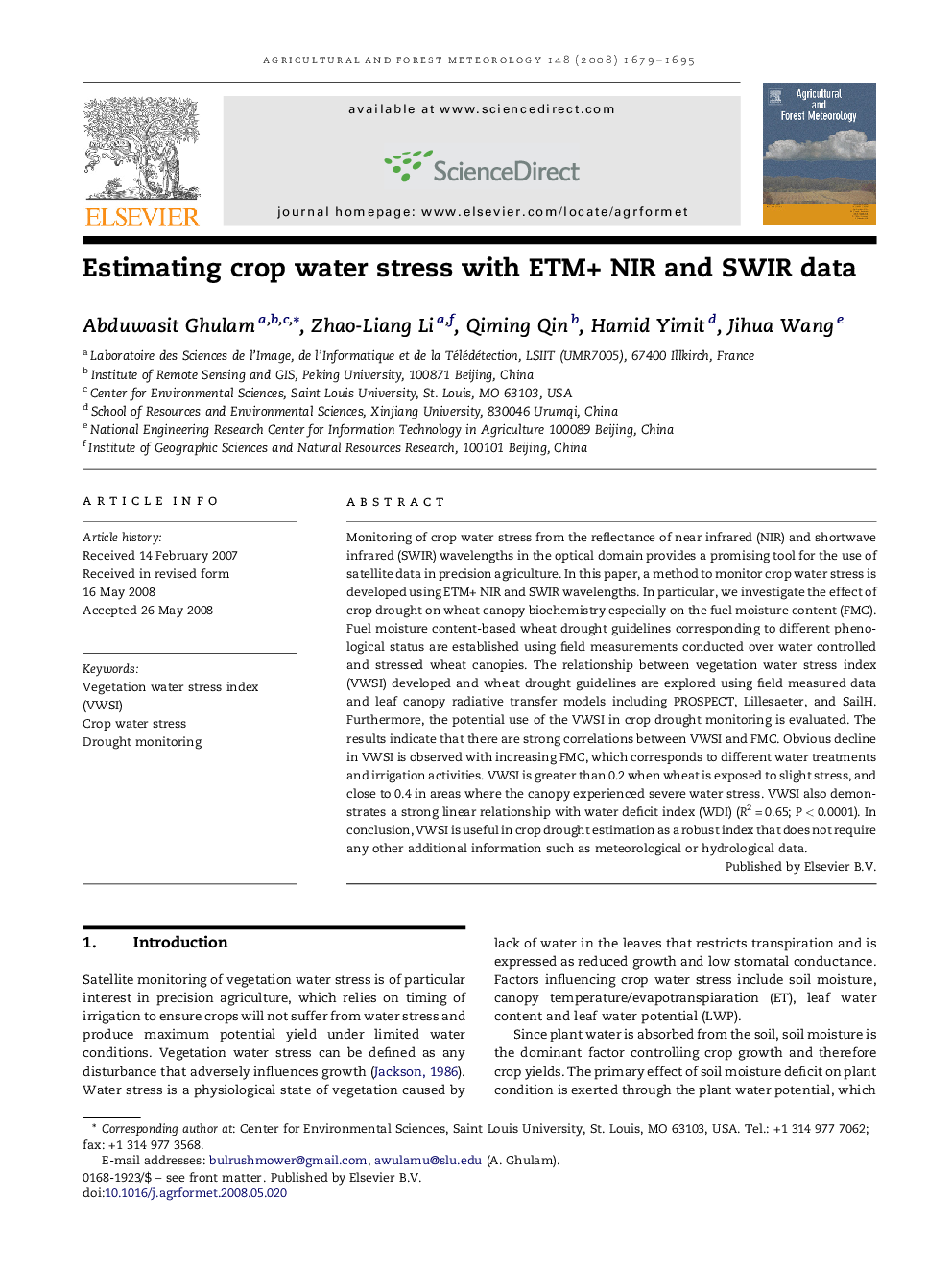| Article ID | Journal | Published Year | Pages | File Type |
|---|---|---|---|---|
| 82405 | Agricultural and Forest Meteorology | 2008 | 17 Pages |
Monitoring of crop water stress from the reflectance of near infrared (NIR) and shortwave infrared (SWIR) wavelengths in the optical domain provides a promising tool for the use of satellite data in precision agriculture. In this paper, a method to monitor crop water stress is developed using ETM+ NIR and SWIR wavelengths. In particular, we investigate the effect of crop drought on wheat canopy biochemistry especially on the fuel moisture content (FMC). Fuel moisture content-based wheat drought guidelines corresponding to different phenological status are established using field measurements conducted over water controlled and stressed wheat canopies. The relationship between vegetation water stress index (VWSI) developed and wheat drought guidelines are explored using field measured data and leaf canopy radiative transfer models including PROSPECT, Lillesaeter, and SailH. Furthermore, the potential use of the VWSI in crop drought monitoring is evaluated. The results indicate that there are strong correlations between VWSI and FMC. Obvious decline in VWSI is observed with increasing FMC, which corresponds to different water treatments and irrigation activities. VWSI is greater than 0.2 when wheat is exposed to slight stress, and close to 0.4 in areas where the canopy experienced severe water stress. VWSI also demonstrates a strong linear relationship with water deficit index (WDI) (R2 = 0.65; P < 0.0001). In conclusion, VWSI is useful in crop drought estimation as a robust index that does not require any other additional information such as meteorological or hydrological data.
